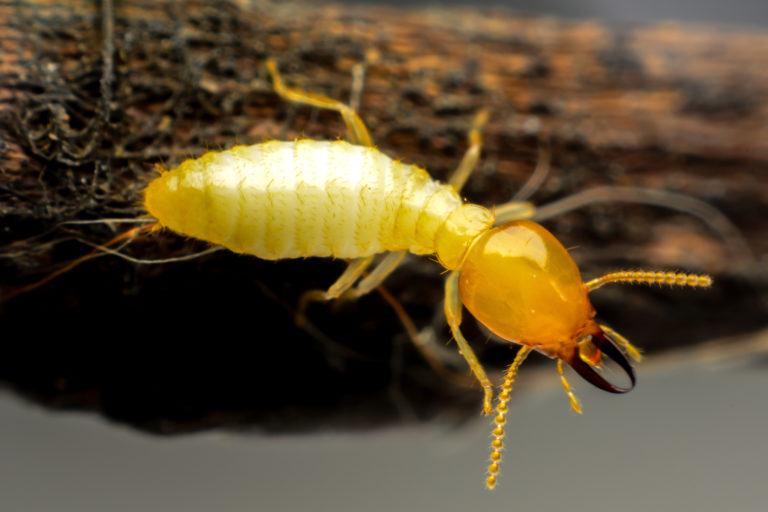
Buying a home is probably the biggest investment most people will ever make. For many, that home is an extension of themselves. It’s more than just a place to sleep, cook, and get out of the elements. It’s also a place to freely express who you are, what you appreciate in life, and what gives your life meaning. It’s a place for you to raise a family and build a life for yourself. With something that meaningful (and expensive), the last thing you want to see happen is your house being slowly devoured by up to two million ugly little grains of rice with legs. The worst thing about it is that it could be going on right now without your even knowing it. Not to get all evening-newsy, but it’s possible it’s been going on for years right under your feet. Termites are sneaky and numerous.
Termites have been the silent killer of countless houses throughout the world. One of the scariest things about a termite infestation is that it can sometimes take up to five years before the termite damage is even noticeable. Oftentimes, the first signs of termite damage that people notice are holes in wood and/or sagging floors. Once that point is reached, dollar signs start piling up pretty quickly. Hopefully, you were diligent about performing termite inspections or were maybe just lucky enough to realize what was going on before that sort of serious damage had been inflicted. But whatever the extent of your termite problem, this article can help you. For more information on getting rid of termites, read on.
Termite Pests
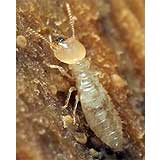 There are between 40 and 50 species of termites (all in the order Isoptera) that can be found in the United States. All of these species can be lumped into one of three groups: dampwood termites, drywood termites, or subterranean termites. The group names themselves tell you a lot about the preferred environments of the different groups and what they prefer to eat. Dampwood and subterranean termites, in general, live in moist climates and prefer soft, wet wood. Drywood termites live in more arid climates and prefer to eat . . . well . . . you get it.
There are between 40 and 50 species of termites (all in the order Isoptera) that can be found in the United States. All of these species can be lumped into one of three groups: dampwood termites, drywood termites, or subterranean termites. The group names themselves tell you a lot about the preferred environments of the different groups and what they prefer to eat. Dampwood and subterranean termites, in general, live in moist climates and prefer soft, wet wood. Drywood termites live in more arid climates and prefer to eat . . . well . . . you get it.
Best Termite Control Methods

Look for evidence of termites.
Termite damage is not always easy to find. If it’s there, it often takes some serious sleuthing to find it. Start by grabbing yourself a screwdriver and a flashlight and heading to the basement or crawlspace. If there isn’t any obvious damage from termites, take the butt end of your screwdriver and start tapping on any wood you can find to see if it’s hollow. If it is, you may have a problem. Tap on floor beams, support beams, pillars, wall boards, etc. If it’s wood, tap it. If you find a hole in the wood, try to stick the tip of the screwdriver in it. If it goes in easily, you could very well have a termite problem. Other things to look for are mud tubes, termite droppings (reddish brown, black, or tan), and insect wings.
Leap into action.
If you can’t tell whether or not you have termites, you need to get an inspector in there. A simple phone call could potentially save you your child’s college fund. If you are certain you have termites, don’t waste any time. Get yourself some good termite pest control products and get your butt in gear. It is quite possible for you to get rid of termites all on your own. You just need to be sure not to cut any corners, not to cheap out, and to get the right stuff. Check out the bottom section of this page for some ideas on termite control products. If you don’t have any time to waste or don’t trust yourself to do it right, then get on the horn and call someone who can help you kill termites.
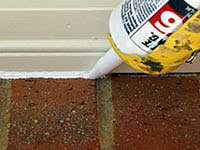
Protect your home against termite invasion.
An important step in termite control is to make sure they can’t re-invade your home once you’ve gotten rid of them to begin with. Also, there’s no point in allowing more termites to enter your house while you’re still battling the first batch. Start by going outside with a caulking gun and some sealant. Seal everything. Concentrate heavily around doors and window frames. Also look for and fill any cracks in the foundation. Another common entrance point for termites is the gaps that are left around wires and cables that lead indoors and around outdoor faucets. If you don’t have them already, make sure to get some insect screen to put over any and all vents that lead into your home.
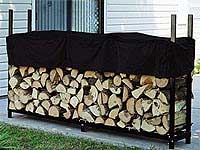
Make termite chow unavailable.
Termites eat wood, right? Right. OK. So don’t let ’em have any. Start by getting rid of any wood debris out in the yard. If you have brush piles, get rid of them. If there’s just some random logs laying around, get rid of ’em. If it’s wood, get rid of it. If it’s your wood pile, chances are you want to keep it. No problem. Just elevate it. If the wood doesn’t have any contact with the soil, the chance that termites will discover it is greatly diminished. Get yourself, or make yourself, a wood cart that holds the wood at least six inches off the ground. Be careful with wood mulch, too. If you can stand not to, don’t use it. If you must use it, make sure not to use it within six inches of your foundation.
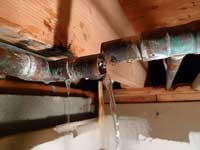
Keep things as dry as possible.
This applies both inside and out. Inspect all of your faucets and every single one of your water pipes to ensure that there are absolutely no drips or leaks. Termites need moisture to survive. Also, make sure that your crawlspace and attic are properly ventilated. You need a good cross-breeze to keep humidity from building up. Clean gutters are important, too. You want them to take water as far away from the house as possible. If they’re dirty, they clog and leak or overflow. Besides that, termites actually do eat more than just wood. Pretty much anything with cellulose will suffice. A bunch of wet organic material in your gutters is a pretty tasty termite treat. Also, when watering the garden or yard, make sure the spray isn’t hitting anything made of wood like your house, shed, garage, logs, stakes, etc.
Termite Protection
Maybe you discovered your termites before they did a bunch of damage. Maybe not. Regardless, you found them and now you need to know how to get rid of termites. The two most common types of termites are the dry wood termite and subterranean termites (these cause the most damage). Once you know they’re there, neither are terribly difficult to kill. Sometimes it takes awhile, but you’ll get ’em. Not to disgust you or anything, but there is some recent genetic evidence showing that termites may indeed be a separate species of cockroach. Pretty fun, eh? That didn’t really have anything to do with anything. I just thought it was interesting and that it might be kinda fun to tell you that you have cockroaches. Alright. Sorry. Here we go.
For do-it-yourself termite control, the two most common ways to kill termites are by using a termite bait or a liquid termiticide. The termite bait systems are kinda neat and a little less intrusive. Almost all of them, if you buy the whole system, come with monitoring stations that you stick into the ground outside. The monitoring system is basically a piece of wood inside a hunk of hard plastic with holes or slits in it so that the piece of wood has direct contact with the soil. Every so often you check on the hunk of wood to see if it has termites on it. If someday you find that it does, you put some bait in there, the termites collect it, take it back to the colony, and the massacre begins. Look for brands like Spectracide Terminate, Advance Termite Bait System, or FirstLine Termite Defense System. As far as liquid termiticides go, most of them are simply mixed up in a sprayer and sprayed on. Look for products like Termidor SC, Cyper TC, Phantom Termiticide/Insecticide, or Premise 75 Termiticide.
Best Natural and Organic Termite Control Methods
Cardboard termite trap.
You can make a simple termite trap by taking three or more flat pieces of cardboard, spraying them with water, and stacking them on top of each other. Termites eat cellulose. Guess what’s in cardboard? Put this trap in areas where termites are prevalent and let it sit. After a couple days, grab the trap and take it immediately outside and burn it. This will not rid your house of all termites, but it will definitely help.
Beneficial nematodes.
As far as biological termite control goes, this is about the best. Beneficial nematodes can be purchased online or at specialty garden stores. The nematodes are sprayed into the yard where they invade the bodies of subterranean termites and kill them by releasing a bacteria into their bodies that makes their tissue more palatable. You can get beneficial nematodes at Amazon.
Use non-edible building materials.
I know it’s an obvious solution, but sometimes the easiest solution is the best. Build with as little wood as possible. Use brick, cement, or stone. If you most use wood, use wood that is less desirable to termites such as juniper, cedar, or redwood.
Boric acid.
Boric acid is one of the most widely used organic pest control products available. For termite control, it is commonly mixed with propylene glycol before treating wood. This does, however, make it a bit less “natural.” If you want to use it as is, simply apply some in termite holes, any voids where termites might be, and to the soil. You can get Boric Acid powder from Amazon.